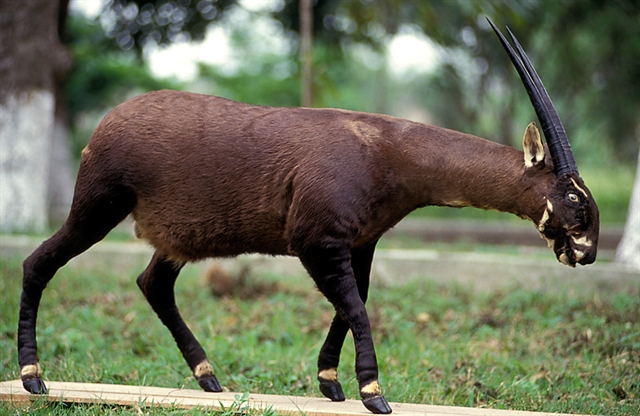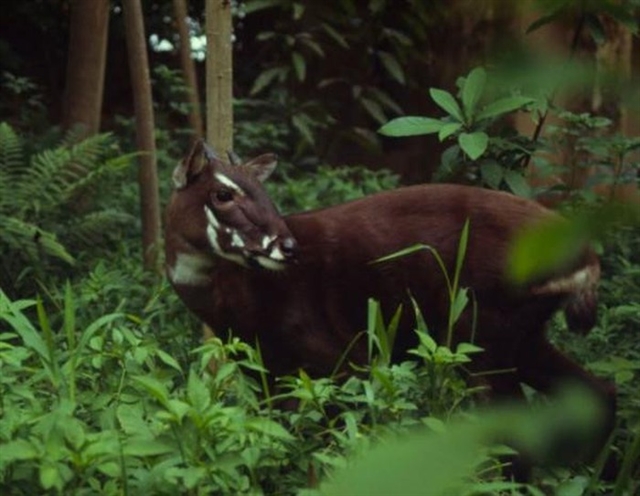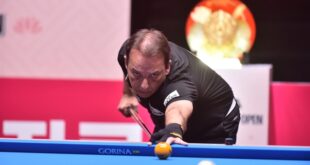Lê Hương
Few people know that the SEA Games mascot – Sao La (the ‘Asian unicorn’) was first discovered in Vũ Quang National Park in the central province of Hà Tĩnh in 1992.
The animal, which has rarely been caught on camera, has long, straight horns and to this day is something of a mystery to scientists.

According to Trần Bỉnh Tự, 58, a former staff member of the park, in 1990, a group of experts from the Việt Nam Forestry Ministry (today’s Ministry of Agriculture and Rural Development) and the World Wild Fund visited the park to explore local biological diversity.
Tự acted as the guide during a trip into the forest.
“We visited a house of a local family right on the edge of the forest, where we found a long, slim pair of horns, which did not look like the horns of any other animals known before,” Tự recalled.
The family said the horns belonged to a goat, which they killed after trapping him. The family ate the meat and kept the horns to decorate their house, Tự said.
The team bought the horns from the family to do further research.
In May 1992, the experts announced that the horns belong to Sao La, an animal from the Bovidae (ox) family that includes cattle, bison, buffalo and antelopes.

The word Sao La was taken from what local Thai people call their thread-twister device, as the horns look like the tool.
Since the discovery, the park established a station for researching and preserving Sao La. Also since then, Tự spent days and nights with experts in the forest in search of the animal, but they never met a single Sao La.
“Between 1992 and 1997, scientists had found only footprints and some plants they believed Sao La ate,” Tự said. “We regret that we had never seen one Sao La in the flesh.”

After being initially discovered in this area, Sao La have been found in the forests of the central provinces of Nghệ An, Quảng Bình, Thừa Thiên – Huế and Quảng Nam.
Nguyễn Việt Hùng, head of the Science and International Co-operation Department of the park, said the announcement of the first discovery of Sao La in the area had an important meaning in preserving the extremely rare mammal.
Hùng said a few years after the research station was established, a Sao La was caught and cared for by scientists, but it soon died.
Hùng himself has never seen a Sao La in the area throughout his 15 years working here.
Sao La resides in thick forests at the altitude of 200-600m along the Trường Sơn Mountain Range. In winter, it moves to lower areas to avoid the cold. The mammal gives birth to babies in early May to early June and dates back to prehistoric times. It eats mostly plants in the forest.
Its body measures 1.3-1.5m long, 90cm high and some 100kg in weight. Its skin is dark brown. Each of its nails has a white dot and its horns can reach 51cm long.
In April 2011, the Sao La Nature Reserve Area was established in Quảng Nam Province covering an area of 160km, linking with Lao’s Xe Sap National Park.

Scientists guess there are some 50-60 Sao La in preserved areas throughout Việt Nam, while the number in the world is not over a few hundred.
Painter Ngô Xuân Khôi, who initiated the mascot Sao La for SEA Games 31, said he thought it over and over before choosing Sao La.
“Ï remembered what I read nearly 30 years ago about the rare mammal discovered in the central of Việt Nam, which stunned world’s scientists,” Khôi said. “I searched for information on the internet and the more I read, the more I am interested I was.”
Khôi drew many drafts in pencil and used a computer to try different colours and styles.
“I’m happy and proud that my design was selected, for which I had experienced ups and downs in moods after many arguments with my colleagues.”
Khôi said his parents worked in the forestry field and he spent his childhood in the mountainous area in the west of the Nghệ An region.

“My very childhood made me remember Sao La, though I skimmed through the news dozens of years ago,” Khôi said. “I also nearly joined the forest patrol department after finishing my army duty.”
Khôi said he hopes the Sao La acts as a SEA Games mascot that raises people’s awareness of protecting wild animals will be widely spread.
“I believe young people will understand more about Sao La,” he said. “They will more appreciate what the nature grants our lush Việt Nam with rich biological diversity.”

- Reduce Hair Loss with PURA D’OR Gold Label Shampoo
- Castor Oil Has Made a “Huge” Difference With Hair and Brow Growth
- Excessive hair loss in men: Signs of illness that cannot be subjective
- Dịch Vụ SEO Website ở Los Angeles, CA: đưa trang web doanh nghiệp bạn lên top Google
- Nails Salon Sierra Madre
 VnExpress News The News Gateway of Vietnam
VnExpress News The News Gateway of Vietnam





